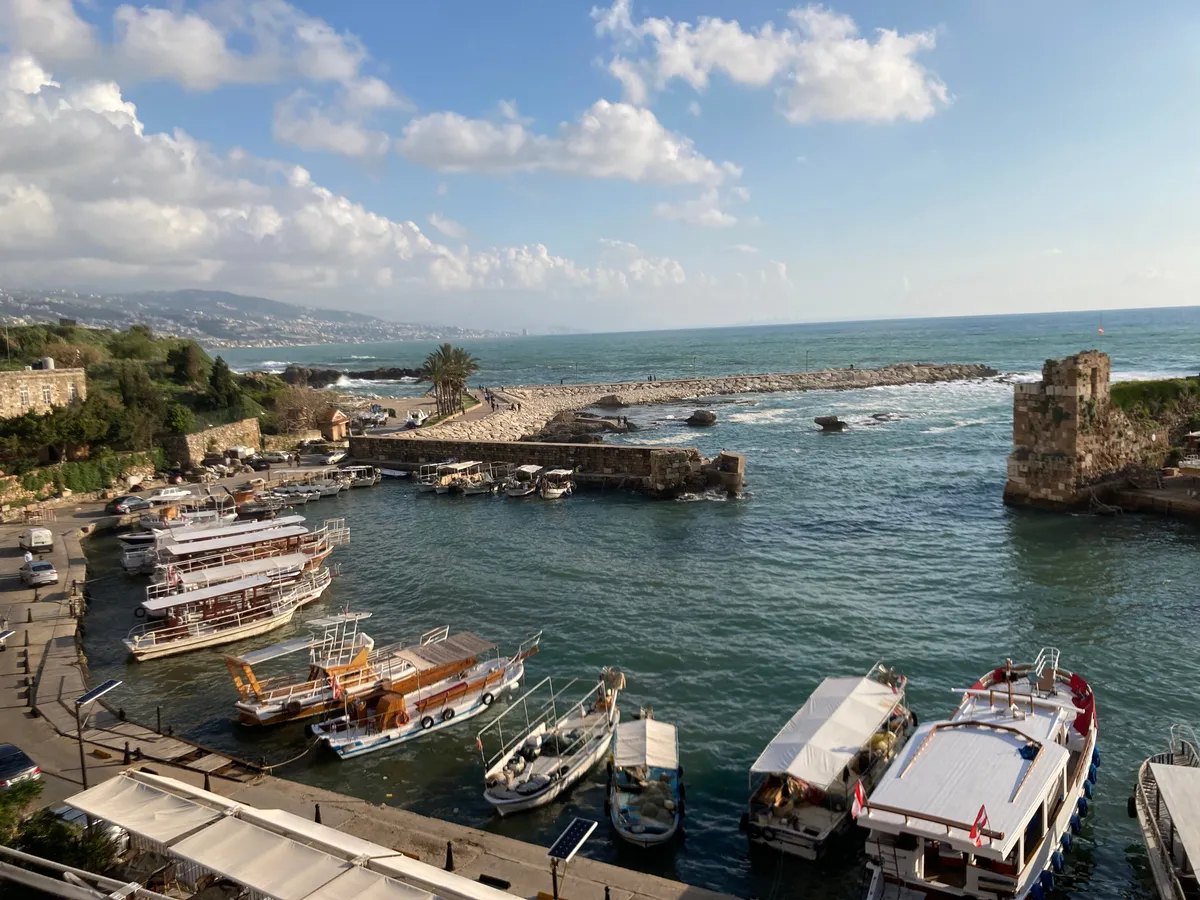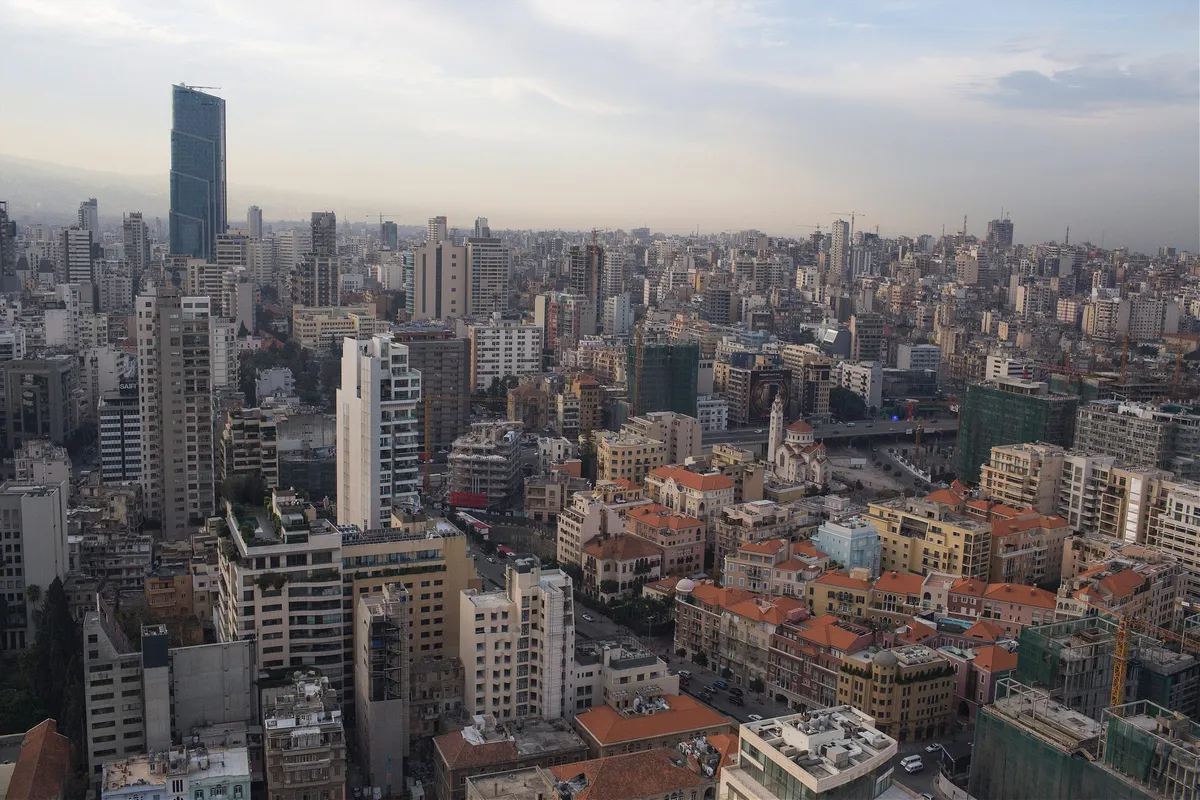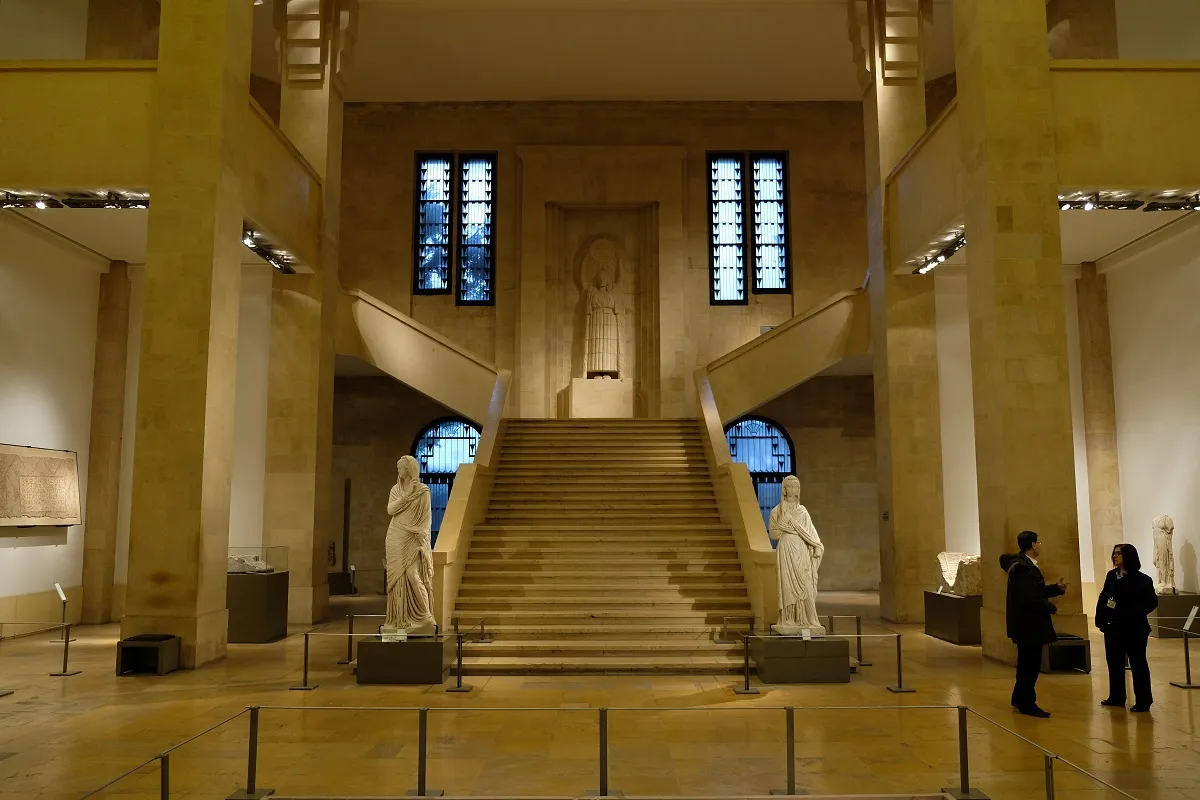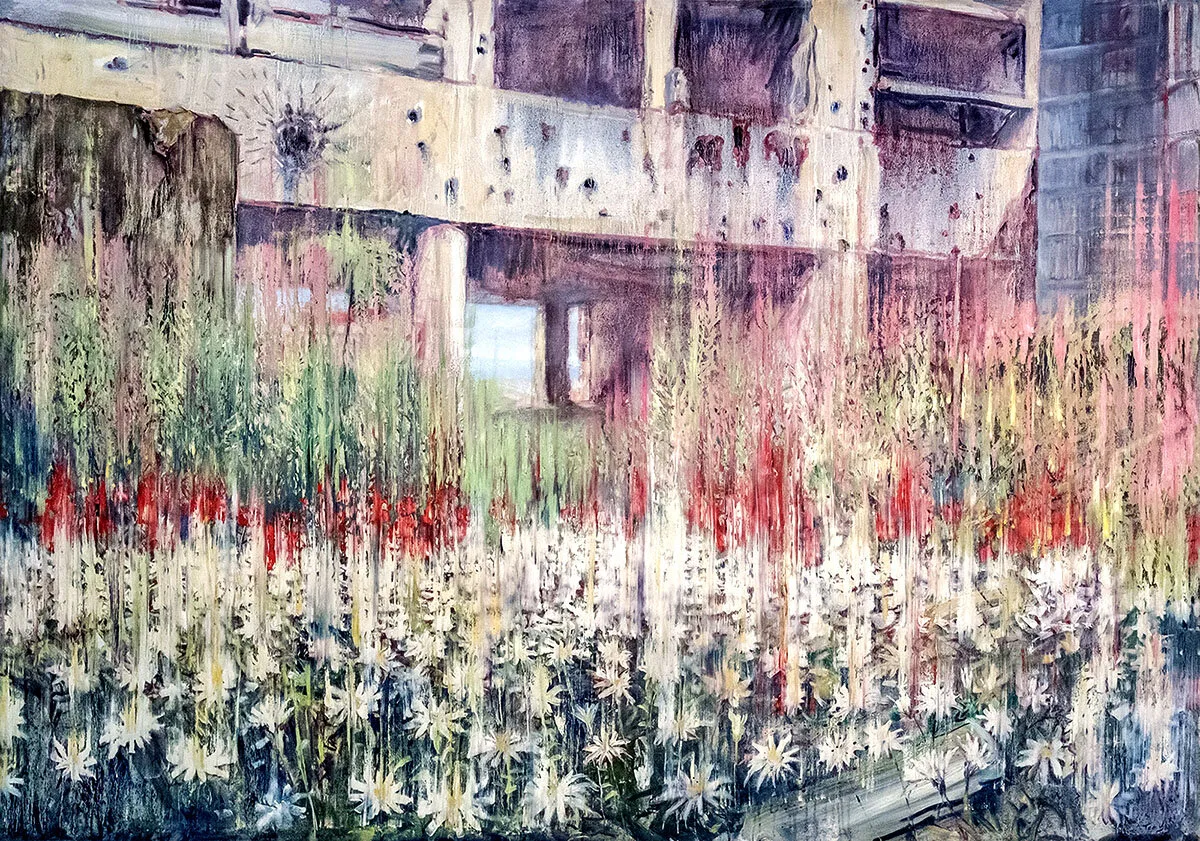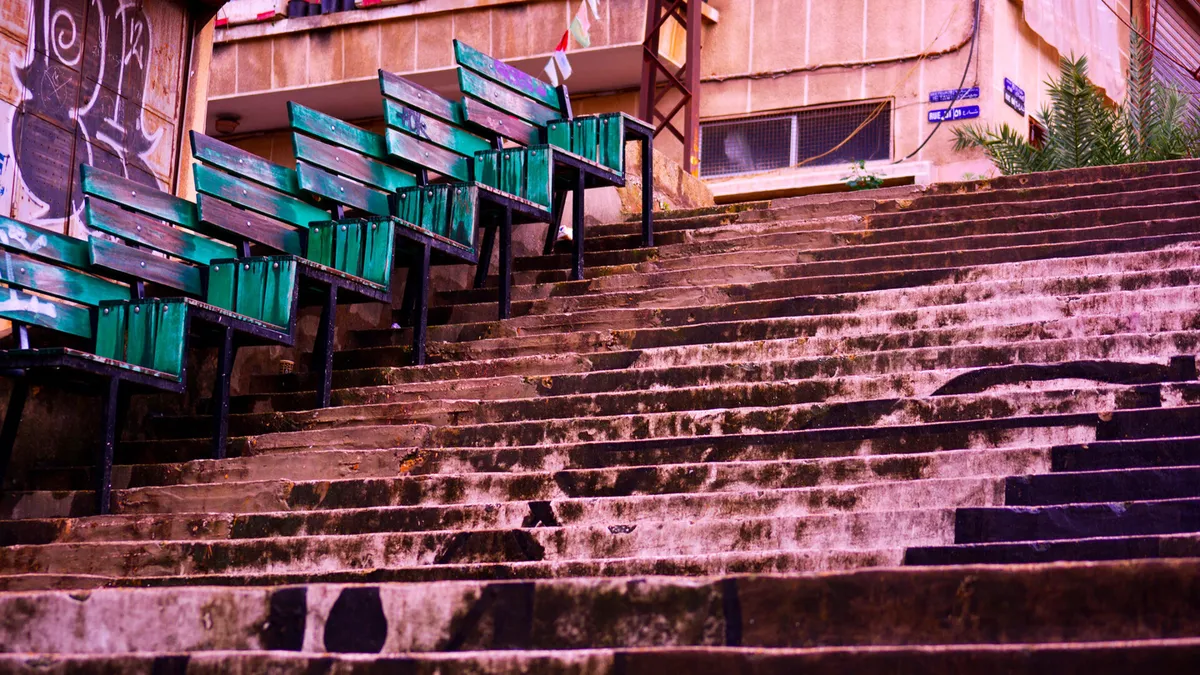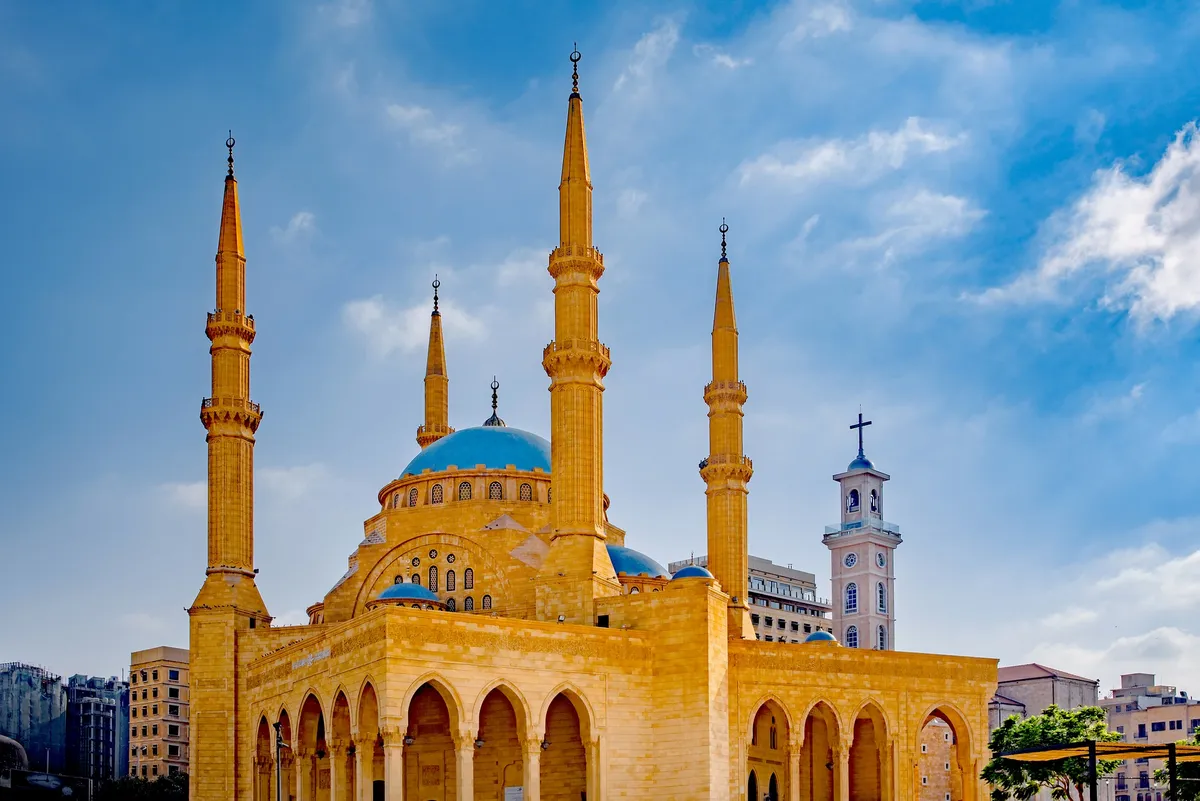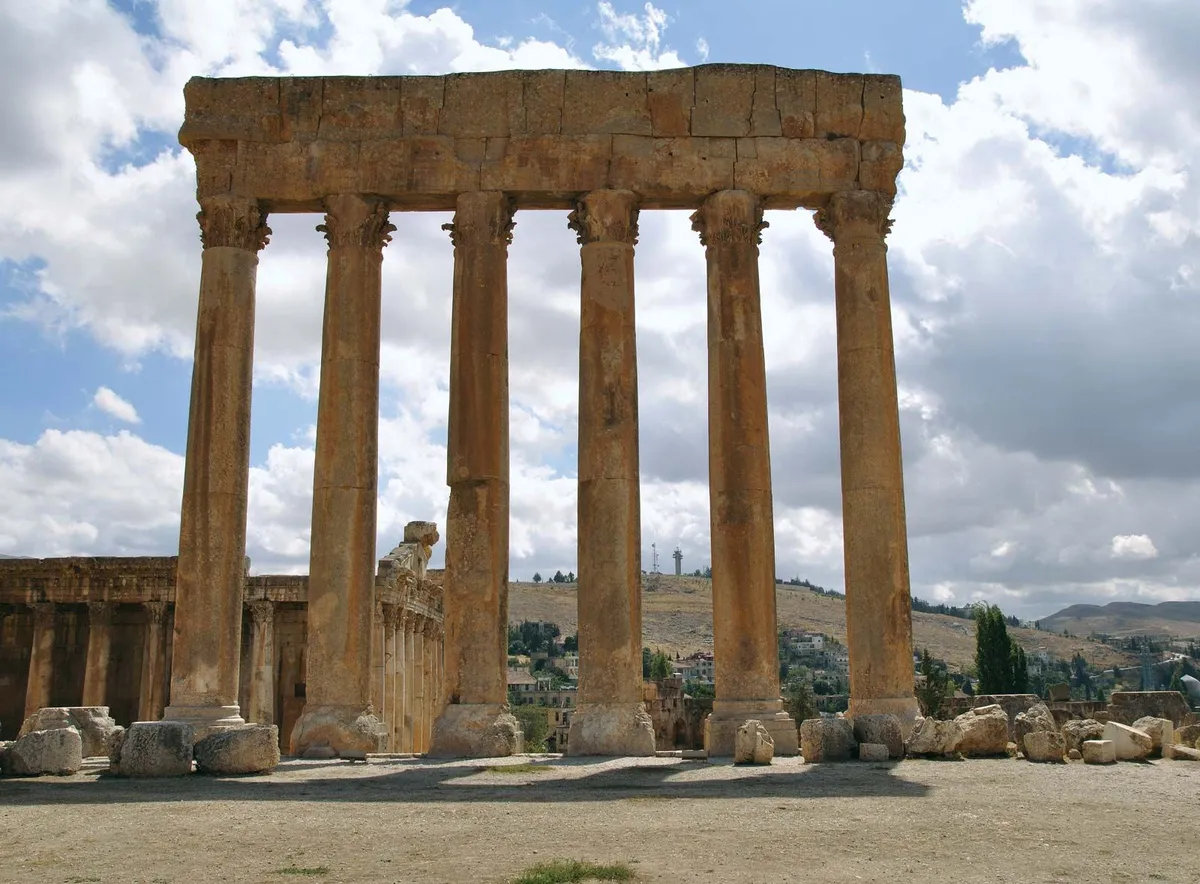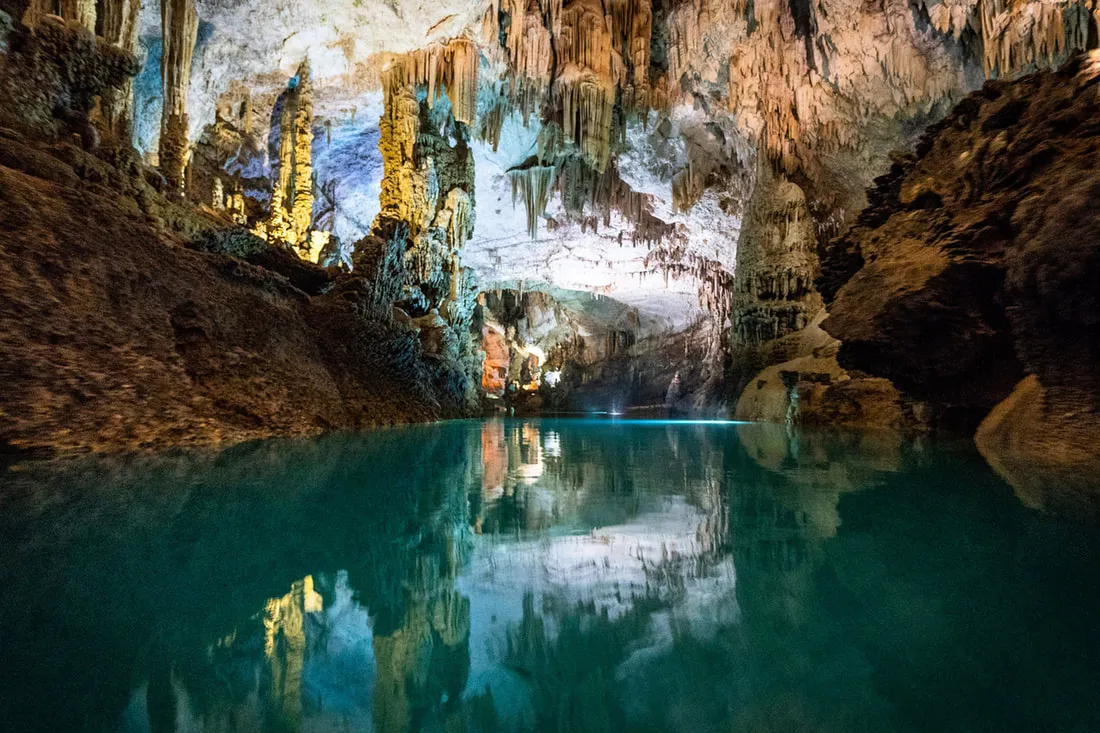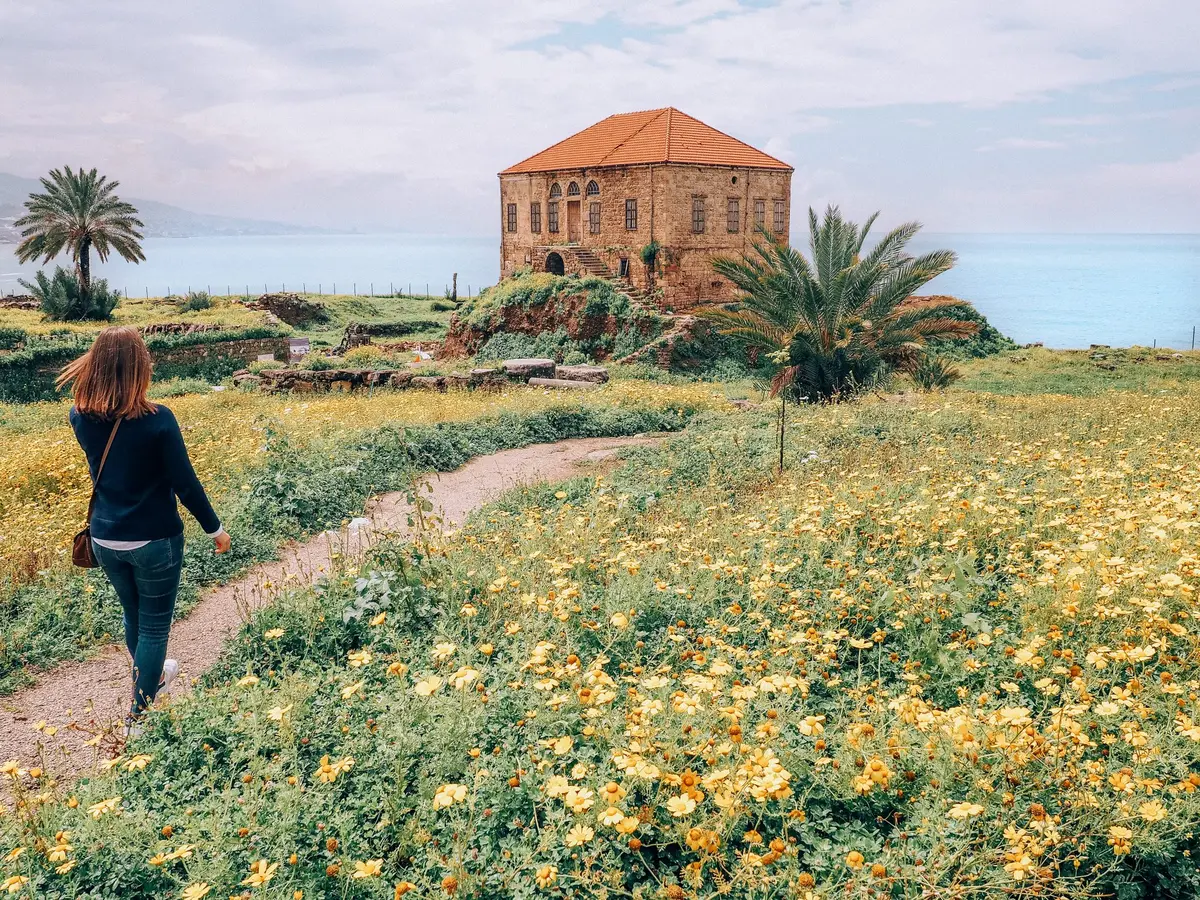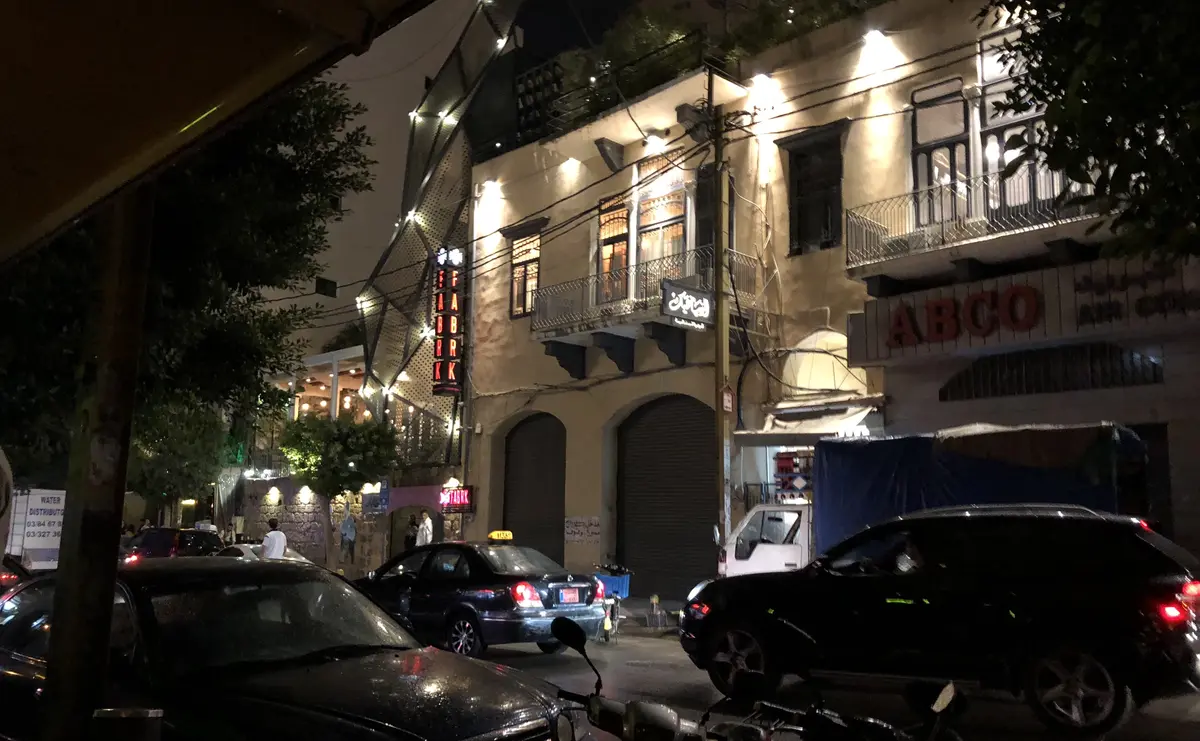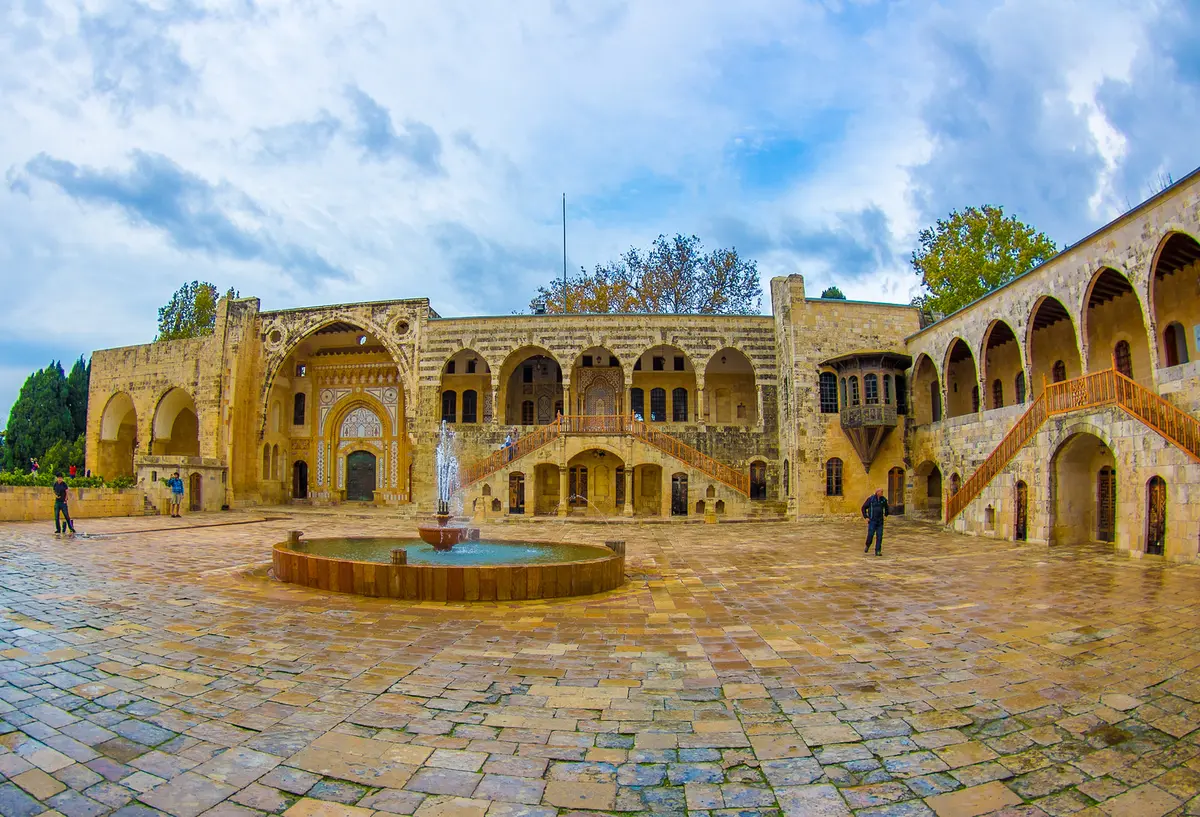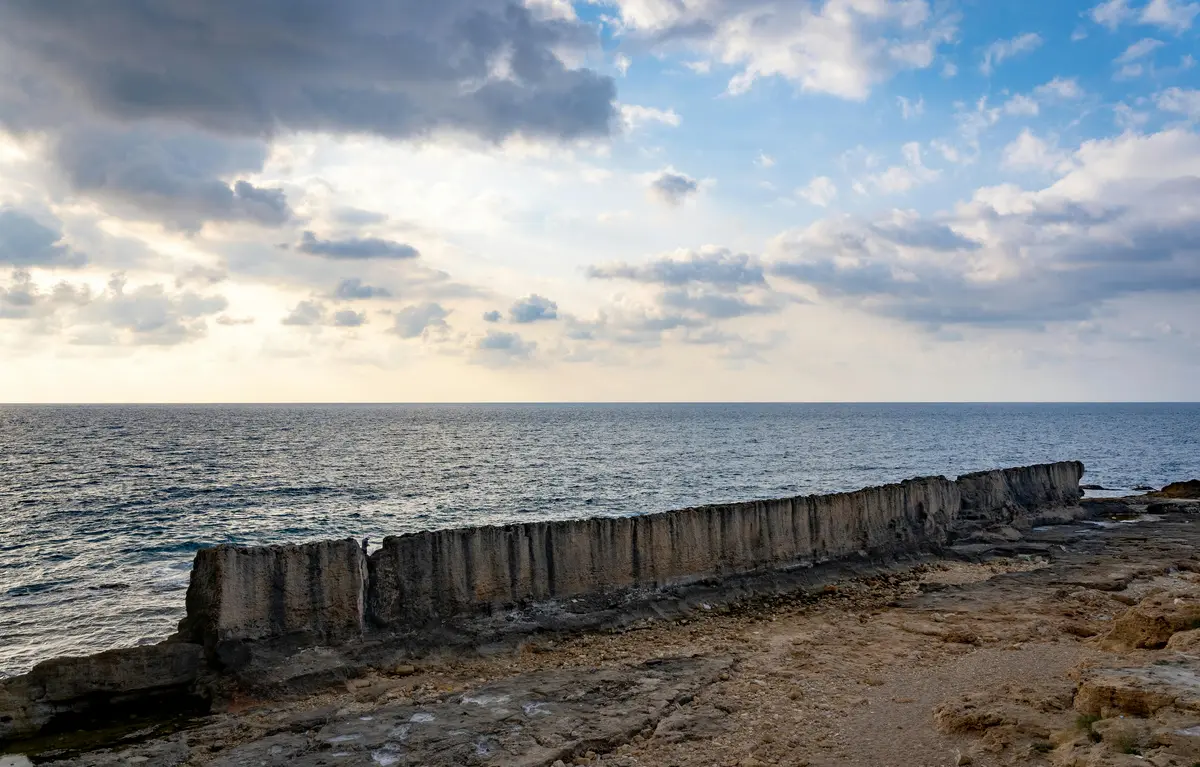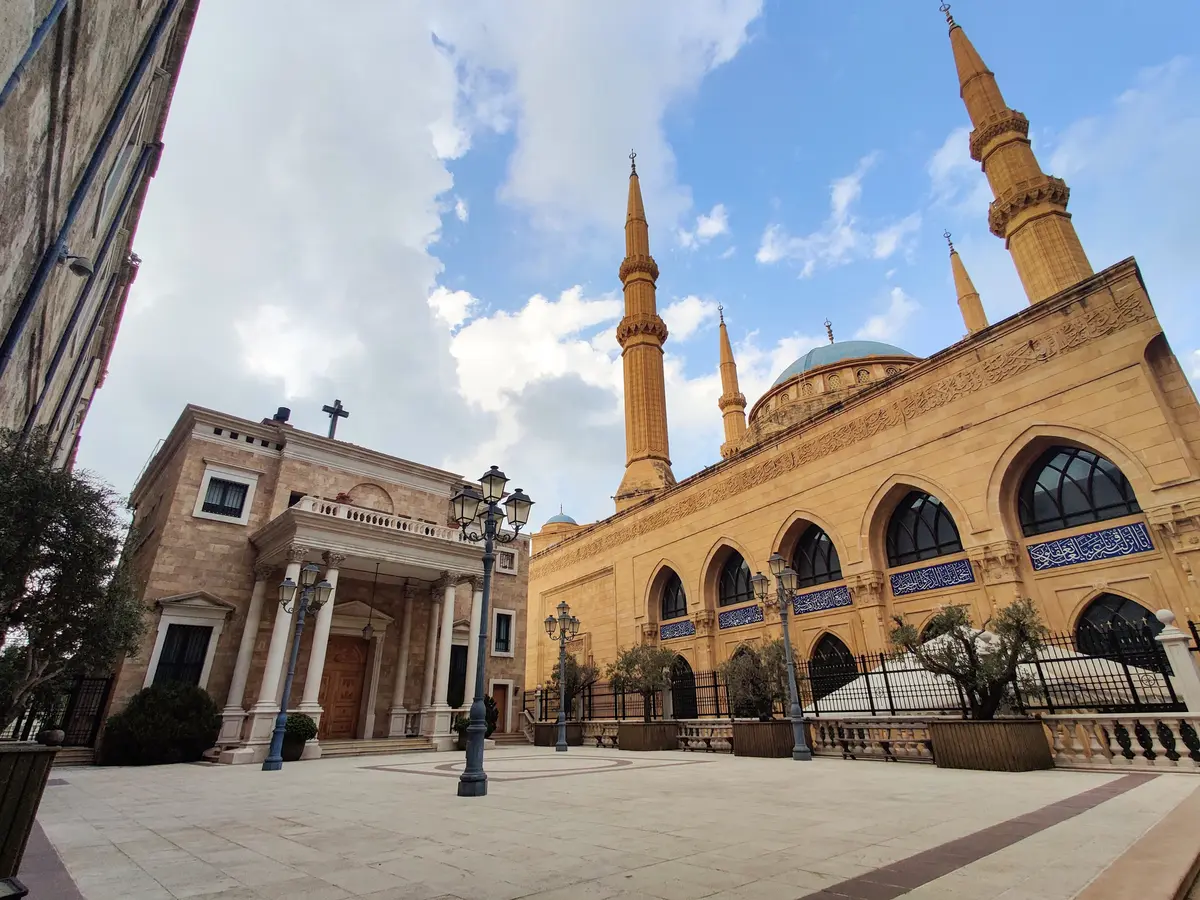Picture this: You step into Beirut expecting crumbling ruins and conflict-scarred streets, but instead, you’re greeted by glittering skyscrapers standing shoulder-to-shoulder with ancient Roman baths. You find neon-lit bars spilling onto cobblestone alleys and a shopping mall where you can literally peek at 2,000-year-old ruins from an escalator. This is Beirut—a city that wears its battle scars like badges of honor while simultaneously throwing one of the Mediterranean’s most vibrant parties. From the jaw-dropping grandeur of nearby Baalbek’s Roman temples to the sizzling street food that’ll ruin you for shawarma anywhere else, the collection of Beirut attractions offers a raw, authentic, and utterly addictive experience that will shatter every preconception you walked in with.
Is Beirut Safe for Travelers? What You Need to Know
Let’s address the elephant in the room right away. The U.S. State Department maintains a Level 4 “Do Not Travel” advisory for Lebanon due to potential risks including terrorism, civil unrest, and armed conflict, with restrictions on U.S. government personnel travel. That’s the official stance, designed to eliminate all possible risk.
Now, here’s what travelers on the ground consistently report: feeling overwhelmingly safe and welcomed. One visitor described Beirut as the only major city where they felt “100% safe,” while others compare it favorably to European cities and the U.S. itself. The disconnect comes down to Lebanon’s economic crisis, which—while creating internal hardship—has made the country exceptionally welcoming to tourists who bring stable foreign currency, particularly U.S. dollars.
If you decide to go, here’s what seasoned travelers recommend: Stay aware of your surroundings and secure your valuables as you would in any major city. Stick to well-traveled tourist and residential areas, avoiding the southern suburbs of Beirut and areas near the Syrian and Israeli borders. Here’s a crucial tip—respectfully steer clear of conversations about Hezbollah, Israel, Syria, or internal Lebanese politics. These topics are deeply sensitive. As for driving? The local style is frequently described as “insane” and “chaotic,” so skip the rental car and hire a private driver for day trips or use ride-sharing apps within the city.
The reality is that your decision comes down to personal risk tolerance, but understanding both the official warnings and the extensive positive firsthand accounts helps you make an informed choice.
Journey Through Millennia: Historical Beirut Attractions
National Museum of Beirut: Where Artifacts Survived a War
Located on what was once the Green Line dividing the city during the civil war, the National Museum of Beirut is Lebanon’s principal archaeology institution and a testament to sheer determination. During the brutal 15-year civil war, museum staff encased mosaics in concrete, hid smaller items in the basement, and shrouded large statues in protective casings to save priceless artifacts from destruction.
Today, you’ll journey chronologically from prehistory through the Phoenician, Roman, Byzantine, and Ottoman periods. Don’t miss the world-renowned Phoenician gilded bronze figurines from Byblos and the iconic Ahiram sarcophagus, which bears one of the oldest known inscriptions in the Phoenician alphabet—a precursor to all modern alphabets. This is truly one of the most essential Beirut attractions for history lovers.
Practical details: The museum sits in the Badaro neighborhood, open Tuesday to Sunday from 10:00 AM to 2:00 PM. The entrance fee for foreigners is 250,000 LBP. Note the limited hours and plan accordingly.
Pigeon Rocks: Beirut’s Postcard-Perfect Sunset Spot
These two majestic limestone outcrops rising from the Mediterranean off the Raouche district are Beirut’s most famous natural landmark. Described as “prime selfie territory,” the real magic happens during the city’s cherished daily ritual: the sunset stroll along the Corniche. Join Beiruti families and couples as the sun dips toward the horizon, then grab a coffee at one of the clifftop cafes to gaze out over the water and reflect. For the adventurous, local boat operators offer short trips that take you through the larger of the two arches.
Roman Baths: Ancient History Beneath Modern Chaos
One of the most surreal things to do in Beirut is stumbling upon Roman bath ruins in the hyper-modern downtown, nestled between sleek government buildings and high-end shops. These are remnants of one of four major thermae that served Roman Berytus as crucial social hubs for bathing, meetings, and recreation. You can still see the foundations of various chambers and the clever hypocaust heating system, where terracotta disk pillars supported marble floors, allowing hot air to circulate underneath. Now landscaped with Mediterranean gardens, the site offers a quiet moment to contemplate the immense history lying just beneath the bustling capital’s surface. Wear comfortable shoes—the viewing areas can be uneven.
Martyrs’ Square: The Bullet-Scarred Statue That Won’t Be Fixed
At the center of Downtown Beirut stands a monument that has become one of the city’s most powerful symbols. The bronze statue, riddled with bullet and shrapnel holes from the civil war, was intentionally left unrepaired. Travelers describe the profound experience of seeing sunlight shine through the statue’s “gaping wounds”—a poignant metaphor for a city that’s endured unimaginable trauma yet continues looking toward a brighter future. This serves as a solemn tribute to those lost during the war.
The Haunting Reality: Beit Beirut and the Holiday Inn
While not conventional tourist attractions, these sites offer an unfiltered look at the civil war’s impact. Beit Beirut, a stunning neo-Ottoman villa on the former Green Line, has been transformed into a museum and cultural center dedicated to the city’s memory and the war.
Even more visceral is the skeletal ruin of the old Holiday Inn Hotel. Once a symbol of Beirut’s glamorous “Golden Age,” this towering structure was a strategic sniper’s nest during the war and now stands as a silent, pockmarked monument to the conflict’s brutality. Travelers call it a “confronting reminder of how brutal the fighting has been.” Seeing this and other abandoned, bullet-riddled buildings standing next to modern luxury apartments is fundamental to grasping the city’s complex, coexisting realities.
Discovering Beirut’s Soul: The Neighborhoods That Define the City
Mar Mikhael and Gemmayzeh: Where Creativity and Nightlife Collide
These adjacent neighborhoods in East Beirut form the undeniable heart of the city’s creative and social scene. Once home to artisan workshops, the area has transformed into a trendy hub of neon-lit bars, innovative art galleries, antique furniture stores, and fashionable boutiques. Armenia Street in Mar Mikhael is ground zero for Beirut’s famed nightlife, where bar-hopping until the early morning hours is the norm.
The real joy here is wandering down narrow side streets to discover picture-perfect pastel-colored buildings and charming staircases decorated with street art. The area exudes a “boho-chic vibe” with lovely French-style mansions and cozy cafes perfect for people-watching. This district was at the center of the devastating 2020 port explosion, and its ongoing restoration and vibrant revival stand as a powerful testament to community resilience. However, be prepared for poor sidewalk conditions—footpaths can be crumbling, uneven, or non-existent, forcing you to share the road with traffic.
Hamra: The Intellectual Heart with Student Energy
During Beirut’s mid-20th-century “Golden Age,” Hamra was the bustling cultural and intellectual heart. Today, it retains that energy, blending a historic academic atmosphere with lively commercial activity. The neighborhood is anchored by the American University of Beirut (AUB), one of the Middle East’s most prestigious universities.
The AUB campus itself is a must-see—its lush, tree-filled grounds offer a “peaceful oasis” and welcome escape from the city’s relentless traffic and noise. Beyond the campus, Hamra Street buzzes with activity, lined with cafes, bookshops, theaters, and a mix of international brands and local shops that contribute to its distinct “student vibe.”
Downtown (Beirut Central District): The Controversial Rebuild
The story of Downtown Beirut is one of the world’s most dramatic urban transformations. Almost completely devastated during the civil war, the entire district was rebuilt by the private company Solidere into a gleaming hub of luxury shops, high-end hotels, and elegant neo-Ottoman architecture.
The result fascinates and frustrates. Visitors are struck by the jarring but compelling juxtaposition of ancient and modern—like the “Roman ruins tucked under an escalator” in Beirut Souks shopping mall. The area is clean, pedestrian-friendly, and architecturally impressive. But here’s the catch: many locals feel the reconstruction erased the district’s authentic character, leaving it with a sterile atmosphere that has “lost its soul” and often feels empty compared to other neighborhoods’ lively chaos. Understanding this dual perception is key to appreciating this area’s significance among the city’s attractions.
Bourj Hammoud: A Vibrant Slice of “Little Armenia”
For an authentic cultural experience off the main tourist trail, head to Bourj Hammoud. This dense, bustling neighborhood is the heart of Beirut’s Armenian community, founded by survivors of the Armenian Genocide in the early 20th century.
Walking these narrow, winding streets is a sensory overload in the best way. The air fills with aromas of spices and roasting meats from authentic Armenian bakeries and restaurants. The district is known for artisan crafts, particularly unique jewelry and leather goods, offering some of the city’s best deals. The walls often serve as a canvas for powerful street art speaking to the community’s history and identity, making it a compelling stop for those seeking a deeper, more authentic slice of Beirut’s diverse cultural fabric.
Art, Culture, and Coexistence: Must-See Museums and Monuments
Sursock Museum: Ottoman Elegance Meets Contemporary Art
This unique cultural gem offers a stunning collection of modern and contemporary art within the opulent walls of a 19th-century villa. The building itself is an attraction—a magnificent example of Italianate and Ottoman architectural styles in the elegant Achrafieh neighborhood. The museum showcases works by Lebanese and international artists and was heavily damaged in the 2020 port explosion before being meticulously restored.
Great news: admission is free. The museum is open Wednesday to Sunday from 10:00 AM to 6:00 PM, though it’s always wise to check the official site for public holiday closures.
Mohammad Al-Amin Mosque and St. George’s Cathedral: Standing Side by Side
Perhaps no single image captures Beirut’s complex religious tapestry better than the grand Mohammad Al-Amin Mosque and the historic St. George’s Maronite Cathedral standing directly next to each other in Martyrs’ Square. This proximity is a powerful visual statement of the country’s multi-confessional identity and coexistence.
The mosque, completed in 2008, is a major city landmark with its massive, vibrant blue dome and four 65-meter-high minarets built in grand Ottoman style. Non-Muslim visitors are warmly welcomed outside prayer times, but observe respectful etiquette: dress modestly with shoulders and knees covered (women must cover their hair with a scarf; veils and abayas are often available at the entrance), avoid visiting during the five daily prayer times (especially Friday noon prayer), maintain a quiet and respectful demeanor, and ask before photographing people who are praying.
AUB Archaeological Museum: An Academic Treasure Trove
Often called a “hidden gem,” the Archaeological Museum of the American University of Beirut sits on the university’s beautiful campus. As one of the Middle East’s oldest museums, it houses a remarkable collection of artifacts from Lebanon and surrounding regions, spanning from the Paleolithic era to the Islamic period.
The chronologically arranged displays allow for a clear journey through millennia of human history. Highlights include the Cesnola Collection of Cypriot pottery and an extensive collection of Phoenician glass. The museum offers exceptional value with free admission and a free audio guide. It’s open Monday to Friday from 9:00 AM to 5:00 PM but closed weekends and during university holidays.
Beirut’s Street Art: The City’s Unfiltered Voice
The walls of Beirut serve as a public canvas, telling the city’s story in ways no museum can. This makes exploring the urban art scene one of the most unique things to do in Beirut. The local street art has evolved from civil war political slogans and stencils into sophisticated, powerful art.
Key neighborhoods for street art hunting are Gemmayzeh, Mar Mikhael, and Hamra, where every corner can reveal new pieces. Some works have become iconic, like the massive, 80-foot mural of beloved Lebanese singer Sabah by artist Yazan Halwani in Hamra—a nostalgic tribute to the city’s “Golden Age.” Another distinctive local style is “Calligraffiti,” which blends Arabic calligraphy with graffiti art, practiced by renowned artists like the duo Ashekman. For structured experiences, organizations like Alternative Beirut offer guided “Urban Art Tours” providing context and stories behind the murals.
Beyond the City: Three Unmissable Day Trips from Beirut
Lebanon’s compact size makes it uniquely suited for exploration from a single home base. Many experienced travelers find the optimal strategy is staying in Beirut and embarking on day trips to the country’s most spectacular sites. This approach minimizes logistical hassle while allowing deep dives into diverse history and geography just a short drive from the capital.
Baalbek: Roman Grandeur That Humbles
Prepare to be stunned into silence by the sheer scale of Baalbek. Located in the fertile Bekaa Valley, this UNESCO World Heritage site is home to some of the largest and best-preserved Roman temples ever built. Travelers frequently report the “mind-boggling” scale surpasses even Rome’s more famous sites.
Once known as Heliopolis, the “City of the Sun,” the complex was a major religious sanctuary of the Roman Empire. Standing beneath the six remaining colossal columns of the Temple of Jupiter—each soaring 20 meters (65 feet) high—is unforgettable. Equally impressive is the remarkably intact Temple of Bacchus with its ornate carvings and monumental gateway. The site also features an enduring mystery: the Trilithon, three massive stone blocks in the temple’s foundation, and the nearby “Stone of the Pregnant Woman,” a megalith weighing an estimated 1,000 tons, which have puzzled engineers for centuries.
Practical details: The entrance fee is approximately $10 USD. Baalbek is about a two-hour drive from Beirut. Hiring a private car and driver is the most comfortable and flexible option, or take public minivans with a change in the town of Chtaura for the more adventurous.
Byblos: 7,000 Years in One Coastal Town
A visit to Byblos (known locally as Jbeil) is like walking through 7,000 years of human history. As a UNESCO World Heritage site, it holds a strong claim to being one of the world’s oldest continuously inhabited cities. This is where precursors to the modern alphabet were developed, cementing its importance in world history.
The charm hits immediately. Travelers describe its atmosphere as reminiscent of an Adriatic seaside town. The core experience involves wandering through the beautifully restored medieval souk with cobblestone alleys and artisan shops, then exploring the rich archaeological site including a formidable Crusader castle, Phoenician temples, and a Roman theater. The journey culminates at the picturesque ancient harbor where colorful fishing boats bob in turquoise water, lined with excellent seafood restaurants—the perfect setting to end your day of exploration.
Practical details: While opening hours for the archaeological site vary, the entrance fee is approximately €10 or 8,000 LL.
Jeita Grotto: Nature’s Underground Masterpiece
A natural wonder of breathtaking beauty, the Jeita Grotto was a finalist in the global New7Wonders of Nature competition. This magnificent system of interconnected limestone caves offers a truly otherworldly experience just a short drive north of Beirut.
The visit is a unique two-part journey. First, explore the vast upper grotto on foot via well-maintained walkways, marveling at immense chambers filled with crystalline formations, including the world’s largest known stalactite hanging from the ceiling. The second part is a serene, silent boat ride on the cool, clear waters of a subterranean river flowing through the lower grotto. The play of light on water and ancient stone creates a magical, unforgettable atmosphere.
Critical practical tips: Photography and videography are strictly forbidden inside both caves to protect delicate formations—you’ll need to store phones and cameras in provided lockers. Book tickets in advance, especially during weekends and the summer high season, as the site gets crowded. The boat ride in the lower grotto may be suspended during the winter rainy season due to high water levels, so check conditions before going. Entrance is approximately $15 USD.
A Taste of Beirut: The Food Scene That’ll Ruin You for Anywhere Else
For many visitors, the culinary scene is one of the main Beirut attractions. Lebanese cuisine is world-renowned for fresh ingredients, vibrant flavors, and incredible variety. From sizzling street food staples to elaborate mezze spreads, the city is a paradise for food lovers.
The Ultimate Street Food Crawl
- Shawarma: The debate over Beirut’s best shawarma is fierce. Restaurant Joseph in Sin el Fil is often lauded, having once been voted number one in the world, though some locals now consider it overrated. Barbar, a 24/7 institution with multiple branches, is an iconic and reliable choice for classic kafta or shawarma sandwiches. For something different, Mano in Bourj Hammoud is famous for its spicy soujouk (Armenian sausage) shawarma.
- Falafel: The quintessential Lebanese falafel is a crispy, golden ball made from ground chickpeas (unlike the Egyptian version using fava beans). For the most authentic experience, Falafel Sahyoun is non-negotiable. This tiny, historic shop on Damascus Road has been serving perfect falafel sandwiches—rolled in fresh bread with tomatoes, parsley, pickled turnips, and creamy tarator sauce—since 1933.
- Man’ouche: The undisputed king of Lebanese breakfast, man’ouche is a simple yet perfect flatbread baked in a furn (oven). The two classic toppings are za’atar (a savory mix of thyme, sesame seeds, and sumac in olive oil) and jibneh (cheese). Iconic spots to grab one fresh from the oven include the ever-busy Barbar and Furn Abed Al Aziz at a bustling crossroads in Hamra.
The Traditional Lebanese Breakfast Experience
A true Lebanese breakfast is a communal feast far beyond a simple man’ouche. For an authentic experience, visit a traditional café like Al Soussi in the morning. The menu features a dazzling array of dishes designed for sharing, including Fatteh (a rich, savory layered dish of toasted pita bread, warm chickpeas, and velvety yogurt-tahini sauce, often topped with toasted pine nuts), Foul Medames (a hearty stew of fava beans seasoned with garlic, lemon juice, and olive oil), and Bayd bi Awarma (eggs fried with flavorful preserved lamb meat).
Top Restaurants Recommended by Travelers and Locals
Beirut’s restaurant scene is dynamic and diverse. Here are standout choices based on traveler and local recommendations: For classic Lebanese mezze with great ambiance, Abdel Wahab in the Monot neighborhood comes highly recommended. Mayrig offers a delicious introduction to Armenian-Lebanese cuisine, perfect for sharing mezze dishes on its lovely terrace. For creative and upscale dining, Baron in Mar Mikhael is celebrated for inventive, modern cuisine with excellent vegetarian options, though it’s noted as very expensive. Tawlet, the famous farmer’s kitchen concept from Souk El Tayeb, offers a daily lunch buffet prepared by local chefs from different Lebanese regions, providing an authentic taste of the country’s diverse culinary traditions.
Insider tip: Many of Beirut’s best local spots may not have websites or prominent Google Maps listings. To discover hidden gems like a local, use the Toters app—similar to Yelp or GrubHub, it’s a comprehensive guide to dining in Beirut widely used by residents.
Essential Practical Tips: How to Navigate Beirut Like a Pro
The Currency Situation: What You Absolutely Need to Know
Due to Lebanon’s ongoing economic crisis, the country operates almost entirely as a cash economy with a dual-currency system. Understanding money management is the single most important practical skill for visitors.
- Bring U.S. dollars in cash—this is non-negotiable. Credit cards work at some high-end hotels and restaurants, but cash is king everywhere else.
- Bring small, clean bills ($1, $5, $10, $20)—many small shops and taxis won’t have change for large notes, and even a small tear can cause a note to be rejected.
- Critical warning: DO NOT use ATMs. Withdrawing from a bank ATM applies the old, official exchange rate of around 1,500 LBP to $1 USD, while the real market rate is vastly higher (89,000 LBP or more). Using an ATM will cost you significant money.
- To get Lebanese Lira, exchange your USD at a licensed money exchange office (“sarraf”) or at an “OMT” store. The best rates are often found at numerous exchange offices along Hamra Street. Check the day’s real market rate on websites like Lirarate.org to ensure a fair exchange.
- You can pay for almost anything directly in USD, but you’ll almost always receive change in Lebanese Lira—another reason carrying small USD notes is useful.
Getting Around the City
- Ride-sharing apps: While Uber and Bolt are available, firsthand traveler comparisons strongly recommend Allo Taxi. Its drivers are more professional, and crucially, they don’t call to renegotiate fares after booking—a common complaint with other services. Set up and verify your account on these apps before leaving home.
- “Service” taxis: For the adventurous, the “service” (pronounced ser-vees) is a shared taxi system. These cars follow semi-fixed routes, and you can hail one, tell the driver your general destination, and share the ride with others for a very low, fixed price.
- Walking: Central Beirut is highly walkable, but be prepared for very poor sidewalk conditions, especially in neighborhoods like Mar Mikhael and Gemmayzeh, where footpaths can be crumbling, uneven, or non-existent, forcing pedestrians to share the road with traffic. Good, sturdy footwear is essential.
Staying Connected
For reliable data and communication, the most effective option is purchasing a local tourist SIM card. One traveler recommends visiting the headquarters of mobile operator Touch (closed Sundays), arriving early (it opens at 8 AM) to avoid long queues. A passport is required for purchase, and payment must be made in Lebanese Lira, not USD.
Quick Reference for Major Sites
- National Museum of Beirut: Tuesday-Sunday, 10am-2pm | 250,000 LBP | Hours are limited, plan accordingly
- Sursock Museum: Wednesday-Sunday, 10am-6pm | Free | Check for holiday closures
- AUB Archaeological Museum: Monday-Friday, 9am-5pm | Free | Closed weekends and university holidays
- Jeita Grotto: Tuesday-Sunday, 9am-5pm | ~$15 USD | No photos inside, boat ride may close in winter
- Baalbek Ruins: Daily | ~$10 USD | Go early to avoid heat/crowds, allow 2-3 hours
- Byblos Archaeological Site: Daily (hours vary) | ~€10 / 8000 LL | Wear good walking shoes
Beirut Attractions: A City That Demands to Be Experienced
Beirut defies easy categorization and consistently exceeds expectations. It’s a destination that demands engagement, rewarding curious travelers with layers of profound history, infectious life-affirming energy, and human warmth that leaves lasting impressions. It’s where ancient and ultra-modern coexist, where scars of the past aren’t hidden but woven into the fabric of a resilient and forward-looking society. The journey through the many Beirut attractions is a journey through its story—from the grandeur of Roman Berytus and the intellectual vibrancy of its “Golden Age” to raw, visceral reminders of civil war and the gleaming, controversial downtown reconstruction.
As one travel guide aptly summarizes, it’s not a city for simple relaxation; it’s too chaotic and crowded for that. Instead, its “energy, soul, diversity and intoxicating atmosphere make it a vital, addictive city.” Ultimately, the most compelling reason to visit Beirut is to experience this spirit firsthand—to go beyond news reports, walk the Corniche at sunset, taste perfect falafel from a generations-old shop, and witness the unbreakable spirit of its people.
